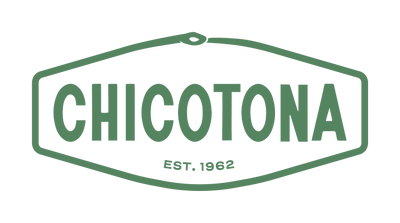A Dream That Started in Guerrero
Those who knew Don Lauro, his family and friends, describe him as a dreamer with a big heart and an even bigger vision. Born in Guerrero, Mexico, he was respected by many, not just for his determination, but for the way he treated people. Around 1945, he started his journey into mezcal production, setting the foundation for something truly special. With just a small piece of land, he built La Chicotona, his very first mezcal distillery, named after the snake that roamed the area.
Building a Mezcal Legacy, One Step at a Time
Like any great story, Don Lauro started small. His early production setup was basic, wooden fermentation vats and copper stills that helped control the heat. At first, he bought his maguey from others, but as demand grew, he knew he needed more control. So, he started acquiring land to grow his own.
People began noticing his expertise, and soon, they were asking him to help set up their own distilleries. Some of these places were so remote that getting there was a challenge. But Don Lauro wasn’t one to back down. With the help of mules and muleteers, he organized everything, ensuring that his mezcal made it from each distillery to a central storage site, a process that took nearly two months.
Growing Something Bigger
Owning land meant Don Lauro could oversee the whole process from start to finish. He carefully selected dark confetti maguey seeds, scattered them across his fields, and hired caretakers to tend to them. It wasn’t fast work, his type of agave took about 12 years to mature, but he was in it for the long haul.
By the late 1950s, Don Lauro had become the most important mezcal producer in Guerrero. His friends kept asking, “Why don’t you start your own brand?” So, in 1962, he finally did.
The Rise of La Chicotona
At its peak, La Chicotona had 16 distilleries across over 2,000 hectares of land spread across multiple municipalities. He focused on wild agave, ensuring every batch had rich, authentic flavors. His mezcal was even making its way into Texas, thanks to business connections.
Back then, mezcal was considered a drink for the lower classes, while the wealthy preferred brandy or rum. But Don Lauro was a pioneer—he was the first in Guerrero to bottle and commercialize mezcal. Don Lauro saw something others didn’t, he believed mezcal had a future beyond the fields. He became the first in Guerrero to bottle and commercialize it, laying the groundwork for what would one day become a globally recognized spirit.
Don Lauro’s Mezcal Process: An Art and a Science
Don Lauro approached each step, from harvesting to distillation, with care and intention. He believed flavor started in the field, selecting agave that could take over a decade to mature and using techniques that brought out its full character.
From slow-roasting piñas in stone-lined earthen ovens to allowing natural fermentation in traditional pine vats, he embraced time-honored practices. His shift from clay to copper stills showed his respect for both tradition and improvement, always aiming for purity and balance.
Quality First, Always
Don Lauro didn’t believe in cutting corners. His mezcal was 52% ABV, much stronger than today’s commercial 38-40%. He had a simple philosophy: “If you open one of my bottles, it should always taste the way I want it to.”
Every year, he could predict whether the mezcal would be outstanding or just good. “This is going to be a particularly good year. Do you want me to save you some?” he would ask. And if it was a standard year, he was honest about it.
Innovation and Tradition
Don didn’t just stick to traditional mezcal, he experimented too. He made Pechuga, a variety where mole, chicken breast, lamb, and citrus fruits were suspended inside the still during distillation, adding extra depth and complexity.
He also crafted curados, aging mezcal with fruits like nance and oranges for 1-2 months, creating a naturally infused flavor profile.
Facing Challenges and Change
As Mexican agricultural laws changed, Don Lauro found himself in legal battles, fighting to protect his land and business, but authorities often favored broader community agreements. Paired with price struggles, he was eventually forced to give up parts of his land and distilleries.
Don Lauro passed away in the early 2000s, just before mezcal began gaining the global recognition he always believed it deserved. At his funeral, many remembered him as a visionary ahead of his time. A man who saw the future in something most had overlooked.
A Family Legacy Lives On
Don Lauro always wanted La Chicotona to stay in the family. He planned to pass it down to his son, Jorge, but sadly, Jorge passed away. His two other sons had started different paths in life, and his daughter, Perla, couldn’t take over due to outdated beliefs that women in distilleries brought bad luck.
But today, Don't Lauro’s grandson and Perla’s son, Daniel, and his wife, Lauren, are bringing Chicotona back. They’re reviving the brand, staying true to Don Lauro’s ethos, and making sure Chicotona continues to stand for family, tradition, and community.
The Future of Chicotona Mezcal
Mezcal has come a long way, gaining recognition worldwide. Through Chicotona Mezcal, Don Lauro’s legacy lives on, honoring tradition while embracing the future. Whether you’re a longtime mezcal lover or just starting your journey, every sip of Chicotona tells a story, a story of a man who turned a dream into a lasting legacy.

